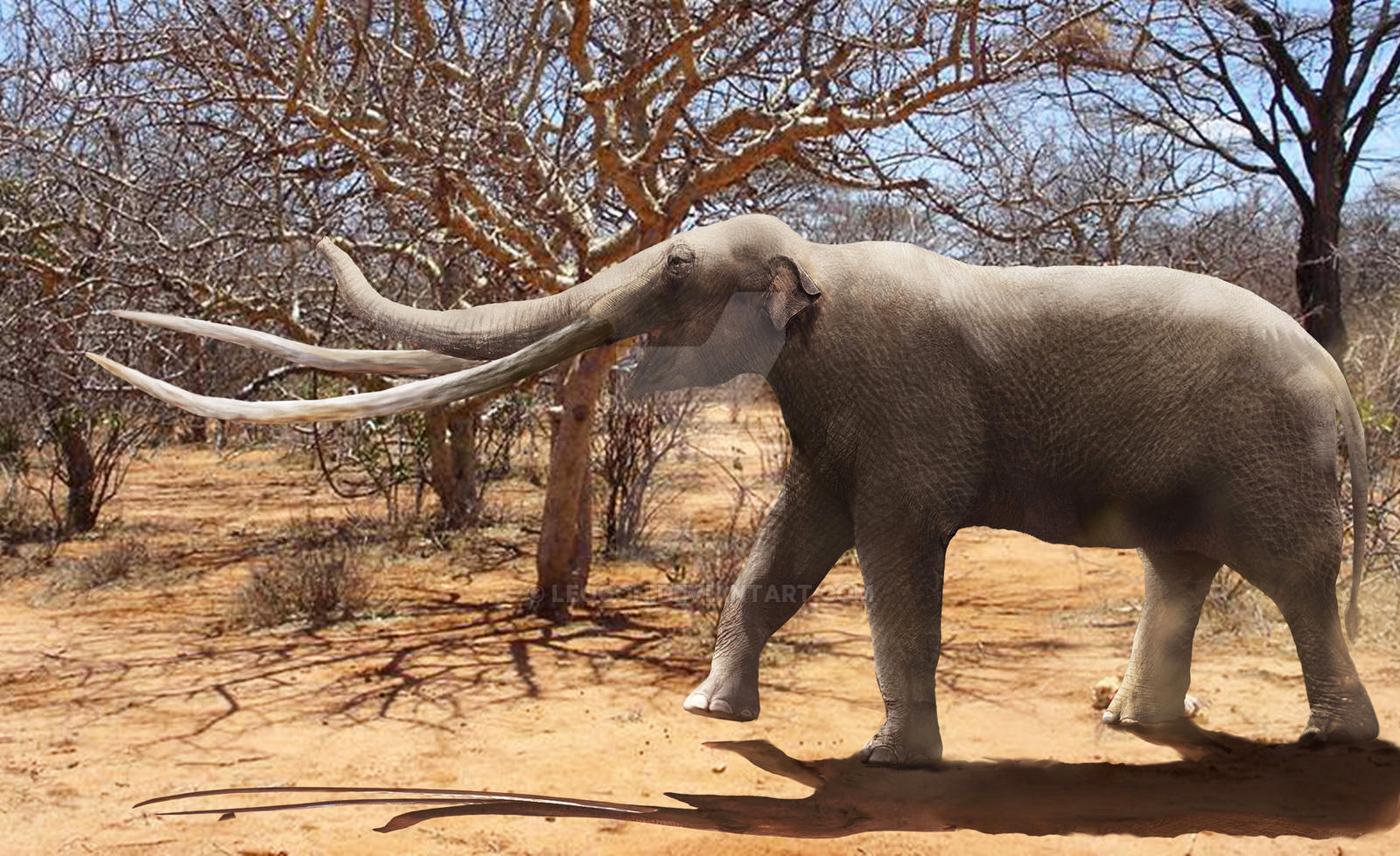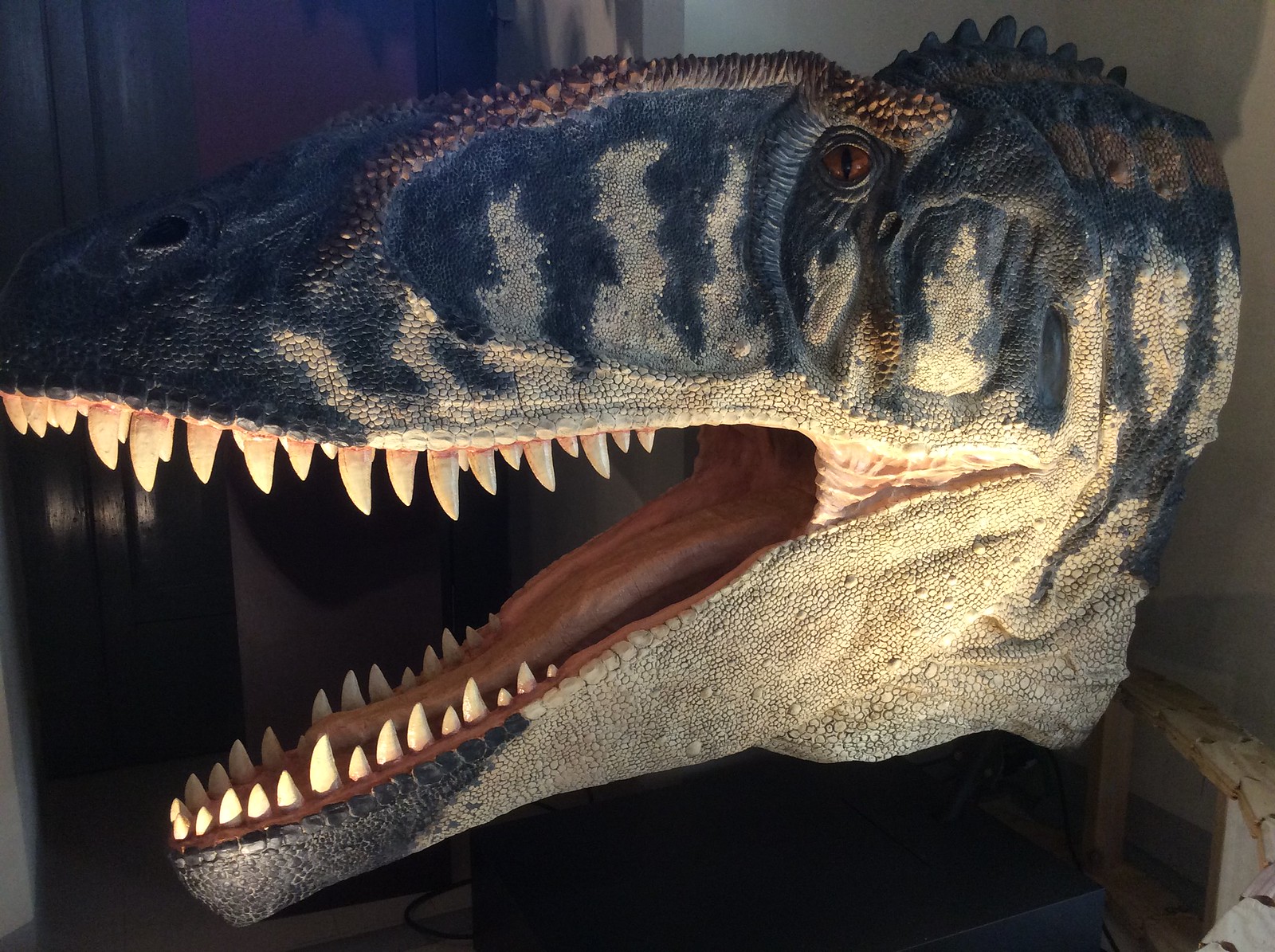Post by Infinity Blade on Mar 3, 2014 7:09:49 GMT 5
Zygolophodon (or Mammut) borsoni
Zygolophodon is an extinct genus of African, Asian, North American and European mastodon that lived during the Miocene and Pliocene epochs. It may have evolved from Tetralophodon. While collecting fossils in the Clarno Formation of Oregon during 1941, noted paleobotanists Alonzo W. Hancock and Chester A. Arnold recovered the most complete Zygolophodon skull known at the time.

Copyright @ Medhi Nikbakhsh
Triceratops spp.
Triceratops (Greek for "three-horn face") is a genus of herbivorous ceratopsid dinosaur that first appeared during the late Maastrichtian stage of the late Cretaceous period, about 68 million years ago (Mya) in what is now North America. It is one of the last known non-avian dinosaur genera, and became extinct in the Cretaceous–Paleogene extinction event 66 million years ago. The term Triceratops, which literally means "three-horned face", is derived from the Greek - (tri-) meaning "three",
- (tri-) meaning "three",  ?? (kéras) meaning "horn", and ?? (ops) meaning "face". Bearing a large bony frill and three horns on its large four-legged body, and conjuring similarities with the modern rhinoceros, Triceratops is one of the most recognizable of all dinosaurs and the best known ceratopsid. It shared the landscape with and was preyed upon by the fearsome Tyrannosaurus, though it is less certain that the two did battle in the manner often depicted in traditional museum displays and popular images. The exact placement of the Triceratops genus within the ceratopsid group has been debated by paleontologists. Two species, T. horridus and T. prorsus, are considered valid although many other species have been named. Research published in 2010 suggests that the contemporaneous Torosaurus, a ceratopsid long regarded as a separate genus, represents Triceratops in its mature form, a view not accepted by everyone. A study published in 2012 by Daniel Field and Nicholas Longrich, researchers from Yale, would later disagree with this assertion upholding that the two should be classified as separate species. Triceratops has been documented by numerous remains collected since the genus was first described in 1889, including at least one complete individual skeleton. Paleontologist John Scannella observed: "It is hard to walk out into the Hell Creek Formation and not stumble upon a Triceratops weathering out of a hillside." Forty-seven complete or partial skulls were discovered in just that area during the decade 2000–2010. Specimens representing life stages from hatchling to adult have been found. The function of the frills and three distinctive facial horns has long inspired debate. Traditionally these have been viewed as defensive weapons against predators. More recent theories, noting the presence of blood vessels in the skull bones of ceratopsids, find it more probable that these features were primarily used in identification, courtship and dominance displays, much like the antlers and horns of modern reindeer, mountain goats, or rhinoceros beetles. The theory finds additional support if Torosaurus represents the mature form of Triceratops, as this would mean the frill also developed holes (fenestrae) as individuals reached maturity, rendering the structure more useful for display than defense.
?? (kéras) meaning "horn", and ?? (ops) meaning "face". Bearing a large bony frill and three horns on its large four-legged body, and conjuring similarities with the modern rhinoceros, Triceratops is one of the most recognizable of all dinosaurs and the best known ceratopsid. It shared the landscape with and was preyed upon by the fearsome Tyrannosaurus, though it is less certain that the two did battle in the manner often depicted in traditional museum displays and popular images. The exact placement of the Triceratops genus within the ceratopsid group has been debated by paleontologists. Two species, T. horridus and T. prorsus, are considered valid although many other species have been named. Research published in 2010 suggests that the contemporaneous Torosaurus, a ceratopsid long regarded as a separate genus, represents Triceratops in its mature form, a view not accepted by everyone. A study published in 2012 by Daniel Field and Nicholas Longrich, researchers from Yale, would later disagree with this assertion upholding that the two should be classified as separate species. Triceratops has been documented by numerous remains collected since the genus was first described in 1889, including at least one complete individual skeleton. Paleontologist John Scannella observed: "It is hard to walk out into the Hell Creek Formation and not stumble upon a Triceratops weathering out of a hillside." Forty-seven complete or partial skulls were discovered in just that area during the decade 2000–2010. Specimens representing life stages from hatchling to adult have been found. The function of the frills and three distinctive facial horns has long inspired debate. Traditionally these have been viewed as defensive weapons against predators. More recent theories, noting the presence of blood vessels in the skull bones of ceratopsids, find it more probable that these features were primarily used in identification, courtship and dominance displays, much like the antlers and horns of modern reindeer, mountain goats, or rhinoceros beetles. The theory finds additional support if Torosaurus represents the mature form of Triceratops, as this would mean the frill also developed holes (fenestrae) as individuals reached maturity, rendering the structure more useful for display than defense.

Copyright @ RJ Palmer
Zygolophodon is an extinct genus of African, Asian, North American and European mastodon that lived during the Miocene and Pliocene epochs. It may have evolved from Tetralophodon. While collecting fossils in the Clarno Formation of Oregon during 1941, noted paleobotanists Alonzo W. Hancock and Chester A. Arnold recovered the most complete Zygolophodon skull known at the time.

Copyright @ Medhi Nikbakhsh
Triceratops spp.
Triceratops (Greek for "three-horn face") is a genus of herbivorous ceratopsid dinosaur that first appeared during the late Maastrichtian stage of the late Cretaceous period, about 68 million years ago (Mya) in what is now North America. It is one of the last known non-avian dinosaur genera, and became extinct in the Cretaceous–Paleogene extinction event 66 million years ago. The term Triceratops, which literally means "three-horned face", is derived from the Greek
 - (tri-) meaning "three",
- (tri-) meaning "three",  ?? (kéras) meaning "horn", and ?? (ops) meaning "face". Bearing a large bony frill and three horns on its large four-legged body, and conjuring similarities with the modern rhinoceros, Triceratops is one of the most recognizable of all dinosaurs and the best known ceratopsid. It shared the landscape with and was preyed upon by the fearsome Tyrannosaurus, though it is less certain that the two did battle in the manner often depicted in traditional museum displays and popular images. The exact placement of the Triceratops genus within the ceratopsid group has been debated by paleontologists. Two species, T. horridus and T. prorsus, are considered valid although many other species have been named. Research published in 2010 suggests that the contemporaneous Torosaurus, a ceratopsid long regarded as a separate genus, represents Triceratops in its mature form, a view not accepted by everyone. A study published in 2012 by Daniel Field and Nicholas Longrich, researchers from Yale, would later disagree with this assertion upholding that the two should be classified as separate species. Triceratops has been documented by numerous remains collected since the genus was first described in 1889, including at least one complete individual skeleton. Paleontologist John Scannella observed: "It is hard to walk out into the Hell Creek Formation and not stumble upon a Triceratops weathering out of a hillside." Forty-seven complete or partial skulls were discovered in just that area during the decade 2000–2010. Specimens representing life stages from hatchling to adult have been found. The function of the frills and three distinctive facial horns has long inspired debate. Traditionally these have been viewed as defensive weapons against predators. More recent theories, noting the presence of blood vessels in the skull bones of ceratopsids, find it more probable that these features were primarily used in identification, courtship and dominance displays, much like the antlers and horns of modern reindeer, mountain goats, or rhinoceros beetles. The theory finds additional support if Torosaurus represents the mature form of Triceratops, as this would mean the frill also developed holes (fenestrae) as individuals reached maturity, rendering the structure more useful for display than defense.
?? (kéras) meaning "horn", and ?? (ops) meaning "face". Bearing a large bony frill and three horns on its large four-legged body, and conjuring similarities with the modern rhinoceros, Triceratops is one of the most recognizable of all dinosaurs and the best known ceratopsid. It shared the landscape with and was preyed upon by the fearsome Tyrannosaurus, though it is less certain that the two did battle in the manner often depicted in traditional museum displays and popular images. The exact placement of the Triceratops genus within the ceratopsid group has been debated by paleontologists. Two species, T. horridus and T. prorsus, are considered valid although many other species have been named. Research published in 2010 suggests that the contemporaneous Torosaurus, a ceratopsid long regarded as a separate genus, represents Triceratops in its mature form, a view not accepted by everyone. A study published in 2012 by Daniel Field and Nicholas Longrich, researchers from Yale, would later disagree with this assertion upholding that the two should be classified as separate species. Triceratops has been documented by numerous remains collected since the genus was first described in 1889, including at least one complete individual skeleton. Paleontologist John Scannella observed: "It is hard to walk out into the Hell Creek Formation and not stumble upon a Triceratops weathering out of a hillside." Forty-seven complete or partial skulls were discovered in just that area during the decade 2000–2010. Specimens representing life stages from hatchling to adult have been found. The function of the frills and three distinctive facial horns has long inspired debate. Traditionally these have been viewed as defensive weapons against predators. More recent theories, noting the presence of blood vessels in the skull bones of ceratopsids, find it more probable that these features were primarily used in identification, courtship and dominance displays, much like the antlers and horns of modern reindeer, mountain goats, or rhinoceros beetles. The theory finds additional support if Torosaurus represents the mature form of Triceratops, as this would mean the frill also developed holes (fenestrae) as individuals reached maturity, rendering the structure more useful for display than defense.
Copyright @ RJ Palmer









